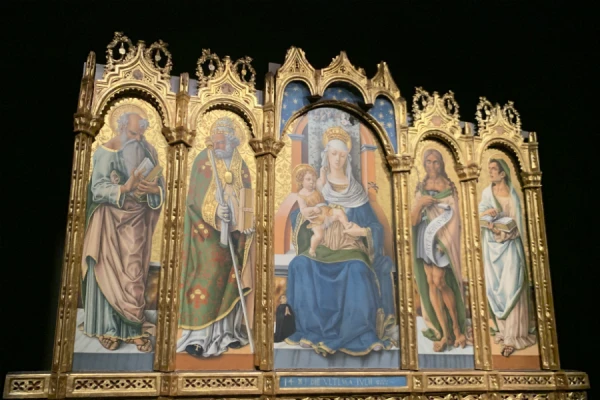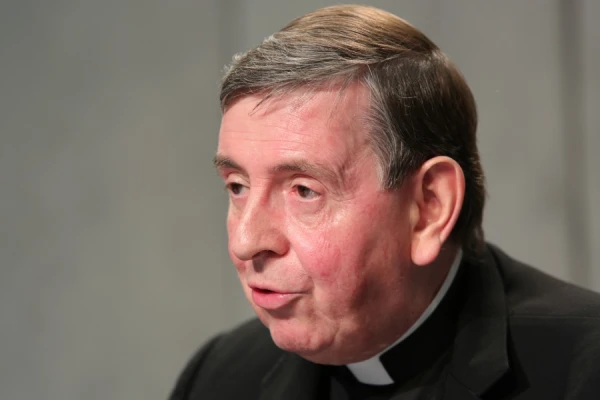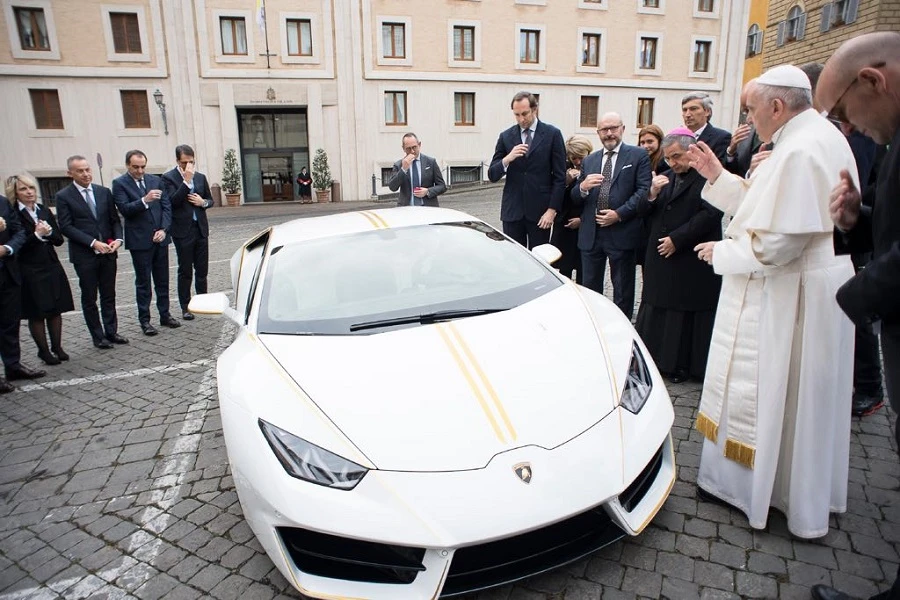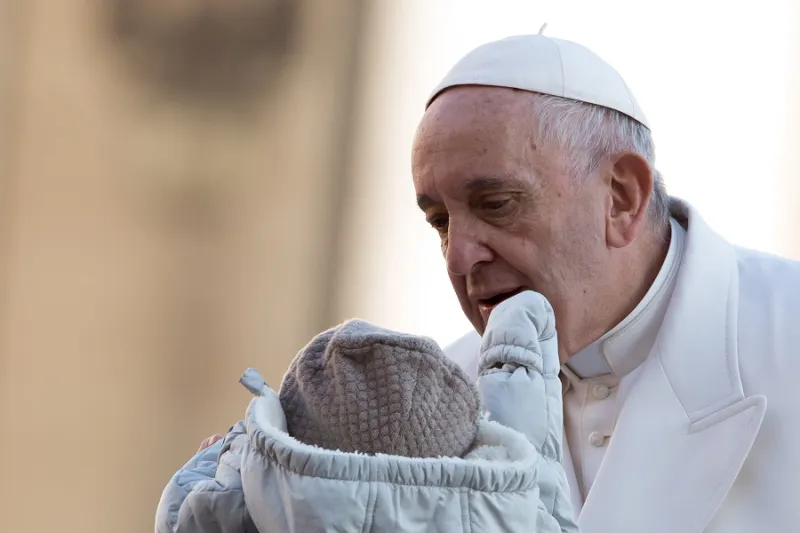
Vatican City, Nov 16, 2019 / 06:01 am (CNA).- The Vatican Museums opened Thursday an exhibit of recently restored paintings of the Virgin Mary by early Renaissance painter Carlo Crivelli.
“The Vatican painting gallery has the privilege of having three large scale paintings by Crivelli,” Vatican Museums’ Curator Guido Cornini told CNA.
“Crivelli is a relatively rare artist, so not many collections in the world may claim the presence of a nucleus of more paintings together,” he said.
The restorations were made possible by members of the Patrons of the Arts in the Vatican Museums, the fundraising branch of the Vatican Museums that started in the United States in 1983.
The U.S. Embassy to the Holy See co-hosted the exhibition opening at the Vatican museums in celebration of the 35 years of formal diplomatic relations between the U.S. and the Holy See.
“U.S. Patrons fund approximately 80 percent of all restoration projects at the Vatican Museums,” U.S. Ambassador to the Holy See Callista Gingrich said at the exhibit opening Nov. 13.
“Through their work, the Patrons ensure that the unique spiritual and cultural mission of the Vatican Museums continues to flourish, and that these works of art endure and inspire millions each year and for generations to come,” she said.
Each year the Vatican Museums curators put together a “wish book” of art pieces in the museums that most urgently need restorations. This is then sent to donors, who can commit to funding the restoration of a particular work of art.
For the Crivelli pieces, the restoration process consisted of many stages, Cornini explained.
“It is more than presenting the painting with a superficial cleaning,” he said. The restorer, diagnostic laboratory, art historian, and/or archeologist must work together to determine the best means of restoration and then execute it in meticulous process that can take over a year.
“You have to get through a long … phase in which more historical information is being gathered both through the archives and compare this with a careful reading of the literature existing on that particular panel painting and then you prepare the proposal of a ‘therapy’ to follow, much like you would do with a medicine,” Cornini said.
The restoration of the Crivelli paintings involved removing the “over-painting” from previous restorations to recover the original vibrant colors under the surface.
Carlo Crivelli (1463-1494) was an early Renaissance painter from Venice, known for his use of gold in the late Gothic style.
Crivelli used many of the latest innovations in painting at the time, but on the other hand, his style displays a nostalgia for medieval art, Cornini explained.
Perhaps his best known pieces are “The Annunciation, with Saint Emidius” (1486) and “Saint Thomas Aquinas” (1476).
The three newly restored pieces of art on display in the exhibit are a five-panel polyptych, “Madonna and Child with Saints” (1481), “Madonna and Child” (1482), and a “Pieta” (1488-1489).
“We are blessed with having these three important pictures, which were restored in past months, and we are now able to present them … with the different histories behind each of them,” Cornini said.
The curator added that the three paintings mark the different stages in the development in Crivelli’s style.
The exhibit, “Crivelli’s gold,” is on display in the Vatican’s Pinacoteca Museum Nov. 14 until Jan. 21, 2020.
Rachel Lanz contributed to this report.
If you value the news and views Catholic World Report provides, please consider donating to support our efforts. Your contribution will help us continue to make CWR available to all readers worldwide for free, without a subscription. Thank you for your generosity!
Click here for more information on donating to CWR. Click here to sign up for our newsletter.






Leave a Reply